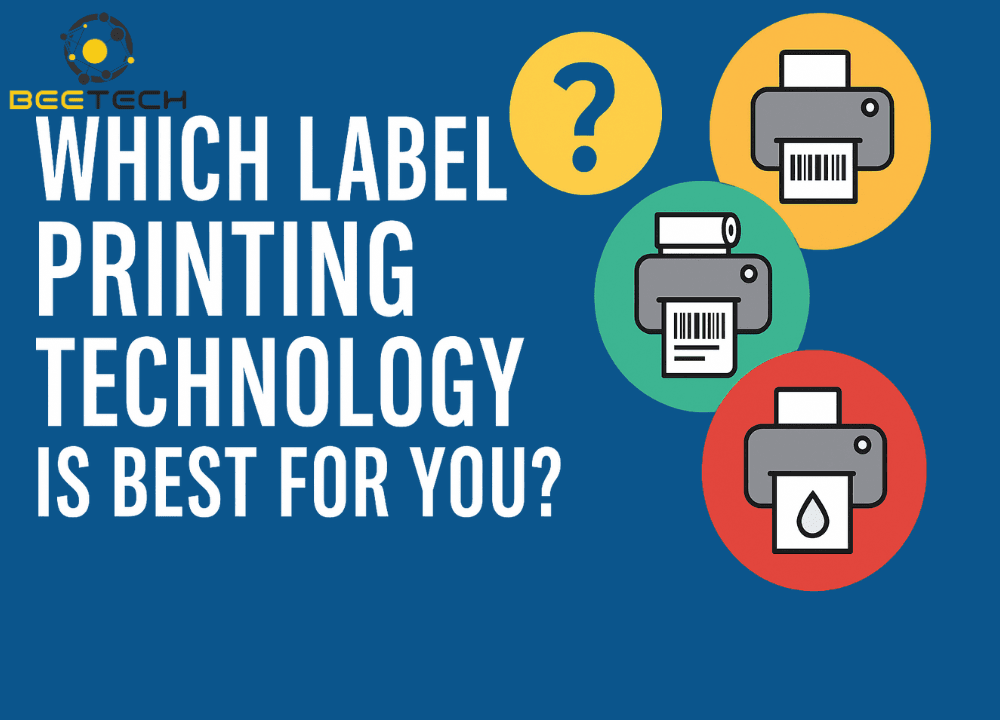80-82 Cao Duc Lan, District 2, HCMC, Vietnam
+84 76 865 6688
info@beetech.com.vn
+84 76 865 6688
About us
Contact us
80-82 Cao Duc Lan, District 2, HCMC, Vietnam
+84 76 865 6688
info@beetech.com.vn
+84 76 865 6688
About us
Contact us

Essential tips you can’t miss to optimize your barcodes
In the era of Industry 4.0, barcodes have become an indispensable part of manufacturing, transportation, logistics, and commerce. Using barcodes allows businesses to collect data quickly, minimize manual errors, and optimize the entire supply chain. However, the true value of a barcode is realized only when it is properly designed and printed, ensuring barcode scanners can read it accurately without errors.
Creating high-quality barcodes is not as simple as printing black bars on a white background. It requires understanding the printing process, selecting the right materials, adhering to global standards, and positioning the barcode correctly on the product. Below are key factors to help you achieve barcodes that are easy to scan, durable, and fully compliant.

A critical factor determining scanner readability is the empty space around the barcode, known as the quiet zone. This area must be free of any characters or images to allow scanners to accurately detect the start and end of the code. The quiet zone should be at least five times the width of the narrowest bar. If this is not maintained, scanners may misread or fail to read the barcode.
Additionally, during product finishing, processes like lamination or protective coating can distort or reduce the quiet zone. Therefore, when designing and printing barcodes, it’s essential to account for subsequent processing to ensure the quiet zone remains intact.
Barcode scanners perform best when there is high contrast between the bars and the background. Light-colored bars on a light background or dark bars on a dark background are difficult to read and prone to errors. Certain color combinations, such as red on white or black on blue, can also pose challenges for scanners.
For optimal results, black bars on a white background remain the ideal choice. Avoid printing barcodes on transparent or glossy materials, as light refraction can make scanning difficult. High contrast not only facilitates easier reading by scanners but also reduces the risk of data errors when printing on various materials.
The printing material significantly affects scanner readability. Glossy surfaces, such as film paper, aluminum cans, or coated cardboard, can reflect light unevenly or too strongly, making scanning difficult.
A useful tip is to use reverse printing: instead of black bars on a light background, print white spaces on a dark background. This technique reduces glare and improves scanner readability, especially when barcodes are placed on glossy or smooth surfaces.
Printing quality directly impacts whether a barcode can be scanned. Even a small portion of a damaged code can make it unreadable. Therefore, it is crucial to monitor and maintain the printing process carefully.
Direct thermal printers are fast but the labels are easily worn, fade, or damaged by light. Indirect thermal transfer printers produce more durable labels that withstand friction and harsh environments.
Additionally, printer components such as print heads or heating elements must be regularly cleaned and maintained. Dirty or damaged print heads can cause blurry or distorted barcodes, reducing readability. Data matrix codes have high error tolerance and can still be read even if part of the code is damaged, but printing at the best quality ensures maximum accuracy.
To ensure barcodes are accepted in the supply chain, especially for international trade, they must comply with established printing and formatting standards. These standards cover bar height, color, contrast, placement on the label, and printing materials.
Organizations like GS1 provide detailed guidelines and verification tools to ensure barcodes meet global standards. Compliance not only facilitates market entry but also reduces the risk of rejection or errors during transportation and storage.
Even a well-designed barcode can be hard to scan if not accessible. Make sure the barcode is not obscured by other labels, stickers, or objects. Barcode scanners operate effectively within a certain distance and angle; improper scanning angle or excessive distance can result in data errors.
Environmental factors such as dust, moisture, or physical impact can also damage barcodes. Protecting barcodes from these elements is essential to maintain stable scanning performance. Consider label placement, materials, and protective coatings to keep barcodes in optimal condition.
When barcodes are correctly designed and printed, businesses immediately see operational improvements. Scanners read faster, data entry errors decrease, inventory control becomes more accurate, and the supply chain operates more efficiently. Staff spend less time troubleshooting errors, streamlining workflow and reducing costs.
Exporters and importers also benefit from globally compliant barcodes, as customs authorities and partners can process products smoothly. This helps businesses remain competitive in the international market.

Common barcode printing issues include: smudged prints, broken bars, low contrast, improper placement, and insufficient quiet zones. To address these issues, businesses should:
Regularly inspect and maintain printers.
Choose suitable printing materials and colors.
Ensure the quiet zone is not obstructed.
Follow GS1 or other international standards.
Protect barcodes from dust, strong light, and physical damage.
Many businesses today implement automation technologies using mobile scanners, fixed scanners, and intelligent warehouse management systems. High-quality barcodes improve system efficiency, speed up inventory checks, reduce labor costs, and optimize logistics processes.
2D barcodes, QR codes, and data matrix codes are increasingly popular due to their large information capacity, high error tolerance, and easy integration with management software. However, all barcode types must adhere to basic design, printing, and protection principles to ensure accurate scanning.
Barcodes are not just a data collection tool they are a core component that optimizes manufacturing, logistics, and commerce. To achieve high-quality barcodes, businesses must focus on the quiet zone, contrast, printing materials, printing quality, international standards, and scanner accessibility.
When these factors are properly combined, barcode scanners work reliably, data is recorded accurately, workflows become smooth and efficient, and businesses enhance their global supply chain participation, competitiveness, and risk reduction.
With over 12 years of experience in the AutoID industry, Beetech is proud to provide leading RFID solutions and smart devices in Vietnam.
Our experienced engineering team supports businesses from consulting and implementation to full lifecycle maintenance, ensuring RFID solutions operate smoothly and deliver maximum value.
Let Beetech be your trusted partner in building intelligent management systems, helping your business enhance competitiveness and thrive in the digital era.
📧 Email: info@beetech.com.vn
🌐 Website: https://beetech.com.vn

See more products: Here



How do barcodes work?
21/05/2025 09:52:52

6 things to know to successfully apply barcode technology to your business
19/05/2025 04:16:28

Barcode scanners help reduce shrinkage and increase inventory accuracy”
16/05/2025 04:21:10

Which Label Printing Technology Is Best for You?
16/05/2025 03:09:19

Comprehensive barcode solution: Optimize management, improve performance and digitally transform businesses
06/05/2025 03:50:33

Why can barcode scanners increase work efficiency?
05/05/2025 04:22:27